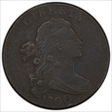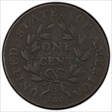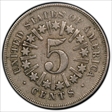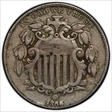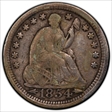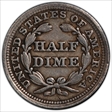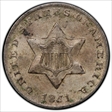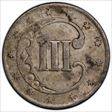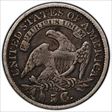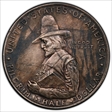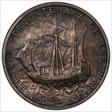The Underdogs 的展示图片库
Coin Collecting: A Passion for Rarity and History Coin collecting, also known as numismatics, is far more than a hobby for many—it’s a pursuit of history, artistry, and rarity. One exceptional acquisition is the 1 Cent 1800/79 United States Draped Bust Large Cent, Variety S-196, a coin that captures both historical significance and numismatic intrigue. Rarity and Uniqueness The 1800/79 overdate variety represents a fascinating chapter in early American minting. This variety occurred when a die originally prepared for 1799 or 1797 was repurposed for striking 1800 cents, showcasing the resourcefulness of the U.S. Mint during its early years. The S-196 designation, part of the Sheldon Large Cent catalog, narrows the coin to a specific die pair, which adds to its numismatic significance. Though not necessarily unique in ownership, coins from this die pair are scarce and highly sought after. Overdates like this are cherished for their historical context, as they reflect the Mint’s challenges in die production and conservation, making such coins a tangible link to the struggles and resourcefulness of America’s formative years. Grading and Condition The N1BN (Mint State “Brown”) grade indicates a near-pristine coin with minimal imperfections and an even brown patina, typical of well-preserved copper coins. The rich toning is a testament to its careful storage and aging process, with natural chemical reactions producing unique hues. Collectors highly value such toning for its visual appeal and contribution to the coin’s individuality. Design Details • Obverse: Features the iconic Draped Bust design by Robert Scot, with Liberty’s profile framed by flowing hair tied with a ribbon. The overdate feature—where remnants of “79” can be discerned beneath “1800”—is a captivating aspect for collectors. Historical Context The 1800 Draped Bust cent emerged during a period of nation-building under President John Adams and later Thomas Jefferson. Copper cents were vital for everyday transactions, and their designs reflected both artistic aspirations and practical considerations. Overdate varieties were a byproduct of the Mint’s frugality, as dies were expensive to produce and repurposed whenever possible. Conclusion The 1 Cent 1800/79 S-196 is more than a collectible; it is a tangible connection to America’s early history, showcasing the ingenuity and artistry of the nascent U.S. Mint. With its rich patina, overdate feature, and historical context, it represents a pinnacle of numismatic achievement, reflecting the dedication of collectors who seek to preserve the past for future generations.
Coin Collecting: A Passion for Rarity and History Coin collecting, also known as numismatics, is far more than a hobby for many—it’s a pursuit of history, artistry, and rarity. One exceptional acquisition is the 1 Cent 1800/79 United States Draped Bust Large Cent, Variety S-196, a coin that captures both historical significance and numismatic intrigue. Rarity and Uniqueness The 1800/79 overdate variety represents a fascinating chapter in early American minting. This variety occurred when a die originally prepared for 1799 or 1797 was repurposed for striking 1800 cents, showcasing the resourcefulness of the U.S. Mint during its early years. The S-196 designation, part of the Sheldon Large Cent catalog, narrows the coin to a specific die pair, which adds to its numismatic significance. Though not necessarily unique in ownership, coins from this die pair are scarce and highly sought after. Overdates like this are cherished for their historical context, as they reflect the Mint’s challenges in die production and conservation, making such coins a tangible link to the struggles and resourcefulness of America’s formative years. Grading and Condition The N1BN (Mint State “Brown”) grade indicates a near-pristine coin with minimal imperfections and an even brown patina, typical of well-preserved copper coins. The rich toning is a testament to its careful storage and aging process, with natural chemical reactions producing unique hues. Collectors highly value such toning for its visual appeal and contribution to the coin’s individuality. Design Details • Obverse: Features the iconic Draped Bust design by Robert Scot, with Liberty’s profile framed by flowing hair tied with a ribbon. The overdate feature—where remnants of “79” can be discerned beneath “1800”—is a captivating aspect for collectors. Historical Context The 1800 Draped Bust cent emerged during a period of nation-building under President John Adams and later Thomas Jefferson. Copper cents were vital for everyday transactions, and their designs reflected both artistic aspirations and practical considerations. Overdate varieties were a byproduct of the Mint’s frugality, as dies were expensive to produce and repurposed whenever possible. Conclusion The 1 Cent 1800/79 S-196 is more than a collectible; it is a tangible connection to America’s early history, showcasing the ingenuity and artistry of the nascent U.S. Mint. With its rich patina, overdate feature, and historical context, it represents a pinnacle of numismatic achievement, reflecting the dedication of collectors who seek to preserve the past for future generations.
Coin Collecting: A Passion for Rarity and History Coin collecting, also known as numismatics, is far more than a hobby for many—it’s a pursuit of history, artistry, and rarity. One exceptional acquisition is the 1 Cent 1800/79 United States Draped Bust Large Cent, Variety S-196, a coin that captures both historical significance and numismatic intrigue. Rarity and Uniqueness The 1800/79 overdate variety represents a fascinating chapter in early American minting. This variety occurred when a die originally prepared for 1799 or 1797 was repurposed for striking 1800 cents, showcasing the resourcefulness of the U.S. Mint during its early years. The S-196 designation, part of the Sheldon Large Cent catalog, narrows the coin to a specific die pair, which adds to its numismatic significance. Though not necessarily unique in ownership, coins from this die pair are scarce and highly sought after. Overdates like this are cherished for their historical context, as they reflect the Mint’s challenges in die production and conservation, making such coins a tangible link to the struggles and resourcefulness of America’s formative years. Grading and Condition The N1BN (Mint State “Brown”) grade indicates a near-pristine coin with minimal imperfections and an even brown patina, typical of well-preserved copper coins. The rich toning is a testament to its careful storage and aging process, with natural chemical reactions producing unique hues. Collectors highly value such toning for its visual appeal and contribution to the coin’s individuality. Design Details • Obverse: Features the iconic Draped Bust design by Robert Scot, with Liberty’s profile framed by flowing hair tied with a ribbon. The overdate feature—where remnants of “79” can be discerned beneath “1800”—is a captivating aspect for collectors. Historical Context The 1800 Draped Bust cent emerged during a period of nation-building under President John Adams and later Thomas Jefferson. Copper cents were vital for everyday transactions, and their designs reflected both artistic aspirations and practical considerations. Overdate varieties were a byproduct of the Mint’s frugality, as dies were expensive to produce and repurposed whenever possible. Conclusion The 1 Cent 1800/79 S-196 is more than a collectible; it is a tangible connection to America’s early history, showcasing the ingenuity and artistry of the nascent U.S. Mint. With its rich patina, overdate feature, and historical context, it represents a pinnacle of numismatic achievement, reflecting the dedication of collectors who seek to preserve the past for future generations.
The 1944-S Five Centavos is a historical coin from the United States’ era of administration over the Philippines. Here’s a detailed breakdown and history: Background and History • Period: During the U.S. occupation of the Philippines (1898–1946), coins were minted specifically for use in the islands. These coins were struck in the U.S. but bore Filipino designs and denominations. • Mint: The “S” mint mark signifies that this coin was minted at the San Francisco Mint. • Composition: The 1944-S Five Centavos is made of 75% copper and 25% nickel. • Design: • Obverse: Features a young Filipino man seated beside an anvil, holding a hammer, with Mount Mayon in the background. Reverse: Displays the United States shield and eagle above, with the inscription “United States of America” and the year of minting, 1944. This coin was part of a series issued to facilitate trade and daily commerce in the Philippines. It also symbolizes the strong ties between the U.S. and the Philippines during World War II. Historical Significance 1. World War II Context: • 1944 was during the height of World War II, and the Philippines was occupied by Japanese forces. Despite this, the U.S. continued to mint coins for the Philippines in preparation for the country’s liberation. • These coins were likely used during the post-liberation period when the Philippines was rebuilding under U.S. administration. 2. Transition Period: • This coin was one of the last minted before the Philippines gained independence in 1946. It represents the transitional period when the country was moving toward self-governance while still under U.S. influence. My Coin My 1944-S Five Centavos is graded N1 (No Grade) by PCGS with certification number 42557853 and PCGS number 90232. • Population of 0 in this grade: This means that my coin is uniquely classified in the PCGS database, possibly due to its condition, uniqueness, or features that do not conform to standard grading but make it noteworthy. • PCGS Registry: my coin holds a special position in the PCGS Set Registry, adding to its collectible appeal. Collectibility and Value • Scarcity: The combination of wartime minting, historical significance, and its unique grading status makes my coin highly collectible. • Market Demand: Collectors of U.S.-Philippine coins often seek coins with historical ties to World War II and transitional periods. • Potential Value: While its precise value depends on demand and auction results, coins with unique population grades can command premiums from collectors.
The 1944-S Five Centavos is a historical coin from the United States’ era of administration over the Philippines. Here’s a detailed breakdown and history: Background and History • Period: During the U.S. occupation of the Philippines (1898–1946), coins were minted specifically for use in the islands. These coins were struck in the U.S. but bore Filipino designs and denominations. • Mint: The “S” mint mark signifies that this coin was minted at the San Francisco Mint. • Composition: The 1944-S Five Centavos is made of 75% copper and 25% nickel. • Design: • Obverse: Features a young Filipino man seated beside an anvil, holding a hammer, with Mount Mayon in the background. Reverse: Displays the United States shield and eagle above, with the inscription “United States of America” and the year of minting, 1944. This coin was part of a series issued to facilitate trade and daily commerce in the Philippines. It also symbolizes the strong ties between the U.S. and the Philippines during World War II. Historical Significance 1. World War II Context: • 1944 was during the height of World War II, and the Philippines was occupied by Japanese forces. Despite this, the U.S. continued to mint coins for the Philippines in preparation for the country’s liberation. • These coins were likely used during the post-liberation period when the Philippines was rebuilding under U.S. administration. 2. Transition Period: • This coin was one of the last minted before the Philippines gained independence in 1946. It represents the transitional period when the country was moving toward self-governance while still under U.S. influence. My Coin My 1944-S Five Centavos is graded N1 (No Grade) by PCGS with certification number 42557853 and PCGS number 90232. • Population of 0 in this grade: This means that my coin is uniquely classified in the PCGS database, possibly due to its condition, uniqueness, or features that do not conform to standard grading but make it noteworthy. • PCGS Registry: my coin holds a special position in the PCGS Set Registry, adding to its collectible appeal. Collectibility and Value • Scarcity: The combination of wartime minting, historical significance, and its unique grading status makes my coin highly collectible. • Market Demand: Collectors of U.S.-Philippine coins often seek coins with historical ties to World War II and transitional periods. • Potential Value: While its precise value depends on demand and auction results, coins with unique population grades can command premiums from collectors.
The 1944-S Five Centavos is a historical coin from the United States’ era of administration over the Philippines. Here’s a detailed breakdown and history: Background and History • Period: During the U.S. occupation of the Philippines (1898–1946), coins were minted specifically for use in the islands. These coins were struck in the U.S. but bore Filipino designs and denominations. • Mint: The “S” mint mark signifies that this coin was minted at the San Francisco Mint. • Composition: The 1944-S Five Centavos is made of 75% copper and 25% nickel. • Design: • Obverse: Features a young Filipino man seated beside an anvil, holding a hammer, with Mount Mayon in the background. Reverse: Displays the United States shield and eagle above, with the inscription “United States of America” and the year of minting, 1944. This coin was part of a series issued to facilitate trade and daily commerce in the Philippines. It also symbolizes the strong ties between the U.S. and the Philippines during World War II. Historical Significance 1. World War II Context: • 1944 was during the height of World War II, and the Philippines was occupied by Japanese forces. Despite this, the U.S. continued to mint coins for the Philippines in preparation for the country’s liberation. • These coins were likely used during the post-liberation period when the Philippines was rebuilding under U.S. administration. 2. Transition Period: • This coin was one of the last minted before the Philippines gained independence in 1946. It represents the transitional period when the country was moving toward self-governance while still under U.S. influence. My Coin My 1944-S Five Centavos is graded N1 (No Grade) by PCGS with certification number 42557853 and PCGS number 90232. • Population of 0 in this grade: This means that my coin is uniquely classified in the PCGS database, possibly due to its condition, uniqueness, or features that do not conform to standard grading but make it noteworthy. • PCGS Registry: my coin holds a special position in the PCGS Set Registry, adding to its collectible appeal. Collectibility and Value • Scarcity: The combination of wartime minting, historical significance, and its unique grading status makes my coin highly collectible. • Market Demand: Collectors of U.S.-Philippine coins often seek coins with historical ties to World War II and transitional periods. • Potential Value: While its precise value depends on demand and auction results, coins with unique population grades can command premiums from collectors.





















